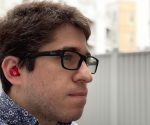Hong Kong news: Third wave HORROR as study suggests virus became more infectious | World | News
[ad_1]
A team of researchers at the Hong Kong Polytechnic University also found that strains in over 20 recently discovered local cases were remarkably similar to those of imported infections, demonstrating they were the source. The research also shows how the virus was spreading across the territory during both the first and second waves, prompting fears of a third attack.
Secretary for Food and Health Professor Sophia Chan Siu-chee said authorities would analyse the results.
Speaking on a radio programme, Prof Chan said: “The genetic sequencing done by the experts is effective empirical evidence that provides us with a clearer picture.
“The Centre for Health Protection was unable to find the source earlier, but now there is evidence and we will follow up in a serious manner.”
The researchers looked at several virus strain samples obtained from different infection groups since late June.
Samples taken from cases connected to the Bun Kee Congee and Noodle Shop in Tsz Wan Sha, where the earliest infections of the third outbreak started at the beginning of July, were identical to those found in the Fulum restaurant in Tuen Mun on July 21.
Associate Professor Gilman Siu Kit-hang said: “The coronavirus had continued to mutate during the first and second waves when we carried out similar research.
“The discovery is very different this time, proving either the virus has adapted to the human body, thus it has stopped mutation, or these cases all contracted the virus at the same venue in a short period of time.”
Professor David Hui Shu-cheong of the Chinese University agreed the pathogen was more transmissible than during the first two outbreaks after it acclimated to humans effectively.
READ MORE: Lewis Hamilton fires coronavirus warning to British Grand Prix fans
Prof Siu’s team contrasted 26 local samples taken from different outbreaks against samples collected from three imported infections.
The team found 19 virus strains collected from the Kong Tai Care for the Aged Centre Limited in Tsz Wan Shan, taxi drivers, and the Shui Chuen O public housing estate were highly similar to strains found in imported infections from the Philippines and Pakistan.
A few strains taken from an infected person and his family members based in Leighton Hill in Causeway Bay likened to one obtained from a pilot returning from Kazakhstan.
Prof Siu said: “As many of the imported cases stayed at the Crowne Plaza hotel in Causeway Bay, where many aircrew stay, the patients likely contracted the virus from these imported cases.”
DON’T MISS:
Coronavirus cases MAPPED: 9 areas with over 100 cases in the last week [INSIGHT]
Meghan Markle’s wealth snub exposed: ‘She comes from money?’ [REVEALED]
South China Sea: US military on alert after Beijing’s bombing drills [UPDATES]
Another strain collected from a case in Sai Kungg could not be connected to any other infections.
This led the team to believe there were at least three infection chains in the community.
During the radio discussion, Prof Chan pointed out that the government has removed the quarantine exceptions for seafarers and aircrew members.
But the Hong Kong government said on July 19 there was no proof the latest outbreak was attributable to quarantine exceptions and that the presumption was a misinterpretation.
[ad_2]
Source link









